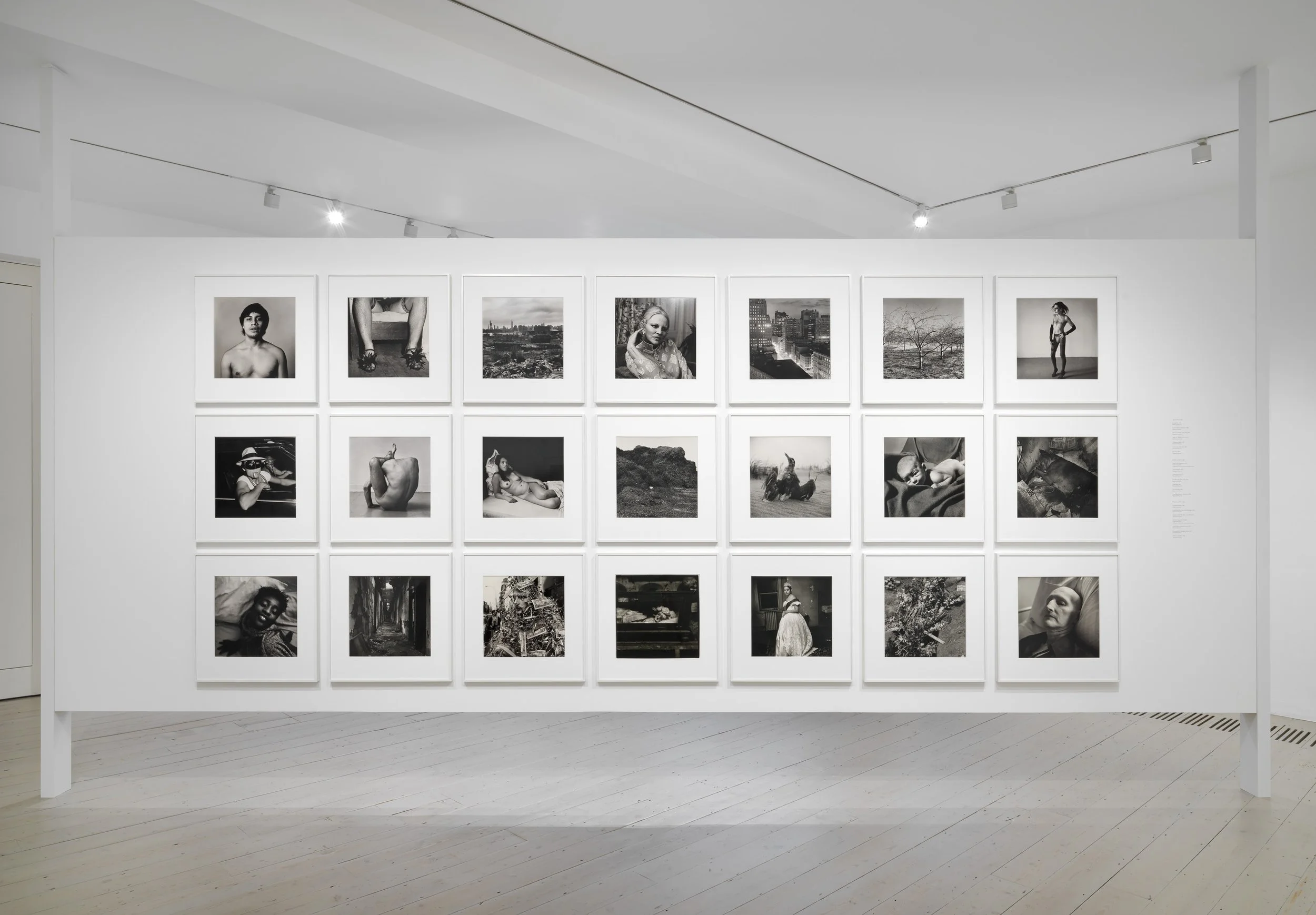By Emily LaBarge, March 10, 2025
David, Peter, Paul. Peter, Paul, David. Paul, David, Peter. I’ve always thought of them as the holy trinity of the American photographer Peter Hujar’s work. He’s the Peter, naturally. (Shall we, if we must choose, designate him the holy ghost, for his gift with the spirit in the machine, the ability to make the seen unseen?) Paul is Thek, the visionary, unclassifiable artist, with whom Hujar lived and worked in Italy in the early 1960s (a “complex erotic/intellectual performative relationship,” says the curator Elizabeth Sussman). And David is Wojnarowicz, the creative polymath and AIDS activist who was Hujar’s closest friend (“both more than and less than lovers,” Wojnarowicz’s partner Tom Rauffenbart described their bond) from when they met in late 1980, until Hujar’s death from AIDS-related pneumonia in 1987.
Across the three sprawling floors of Raven Row’s “Eyes Open in the Dark” (until April 6), a vast and immaculately curated show that focuses loosely on the photographer’s later work, images of the three men flicker in and out of view. There’s “Paul Thek in the Woods” (1957), white shirt and shorts, boyish haircut, in a lithe odalisque amidst a copse of pine trees, their fallen needles a soft bed that forms the entire ground of the pale, ethereal image. Here’s “David Wojnarowicz Reclining” (1981), shirtless and in repose, like a matinée idol, against a bulky pillow, eyes heavy-lidded, long face softened with shadows, as if transformed by love.
Peter Hujar himself is mostly captured by his own camera, chameleon-like from image to image, sometimes smoking a cigarette like a 50s greaser, other times standing nude in white underwear, a bare studio scene, tightly framed by his classic square-format camera. On rare occasions, he is caught by others: an upper gallery has a striking 1963 painting by Thek of Hujar, a grid of black-and-white five by five squares, as if aping his subject’s medium specificity. The photographer’s face is caught partially, in non-linear glimpses, and sometimes rendered unrecognisable — folds of skin, a hollow, a deep shadow. The same room holds Andy Warhol’s 1964 screentests of the photographer, playing on a grid of four (somewhat anachronistic) monitors. A lesson in how a person can change so vastly, depending on whose metier is doing the beholding.
Squares and squares, black and white, light and dark, angles across faces and bodies, looking out, looking back, being looked at. Hujar’s oeuvre, whether it focuses on lovers and friends, knowns and unknowns, the who’s who of New York’s alternative and queer creative scenes of the 1980s, cityscapes and cruising scenes, or — my favourite, eclipsing even the trinity — animals, is always about the ineffable intimacy transferred to objects, people, places, beings when they are looked at, held, preserved. The mood, the framing, the light — just so — how did he make everything so beautiful, so strange, so much itself it becomes a performance, an ideal, an icon of itself? (You might ask the same of Hujar’s moody, sfumato, square-format peers, like Diane Arbus or Francesca Woodman who, too, made their own worlds in images.) A spread of contact sheets, images all taken on the same day traversing Manhattan, offers a purview: detective-like you can pore over the images Hujar chose or didn’t, as if there is a golden ratio of lines and proportions that make his images so dynamic — precise and quiet, but offering the whole world in one image, one person, one look (just look).
On the ground floor of the galleries, the largest room in the show contains portrait after portrait, many taken in the later years of Hujar’s too-short life, when a kind of darkness had descended as his friends were diagnosed with HIV, died of AIDS complications, and he himself became ill. You might notice Peggy Lee, Candy Darling, Susan Sontag, William S Burroughs, Gary Schneider (who curated the show with Hujar biographer John Douglas Millar), Cookie Mueller, Greer Lankton, or other downtown luminaries. But I kept thinking back to a small room upstairs, hung austerely with a series of eight photographs of the waterways that border Manhattan (the Hudson and the East River, four of each) made for a Catholic Chapel at Fordham University in the Bronx. The dark aqueous surfaces roil and toil, as arresting and changeable as any human face, as life, with so much beneath still unfathomable.
Emily LaBarge is a regular contributor to The New York Times and 4Columns. “Dog Days”, a work of non-fiction, will be published in the UK this year by Peninsula Press.
PETER HUJAR "Eyes Open in the Dark" Installation, 2025.
PETER HUJAR "Self-Portrait", 1980
PETER HUJAR "White Turkey, Pennsylvania", 1985.
PETER HUJAR, "Canal Street Pier, New York (Stairs)", 1983.
PETER HUJAR "Eyes Open in the Dark" Installation, 2025.






